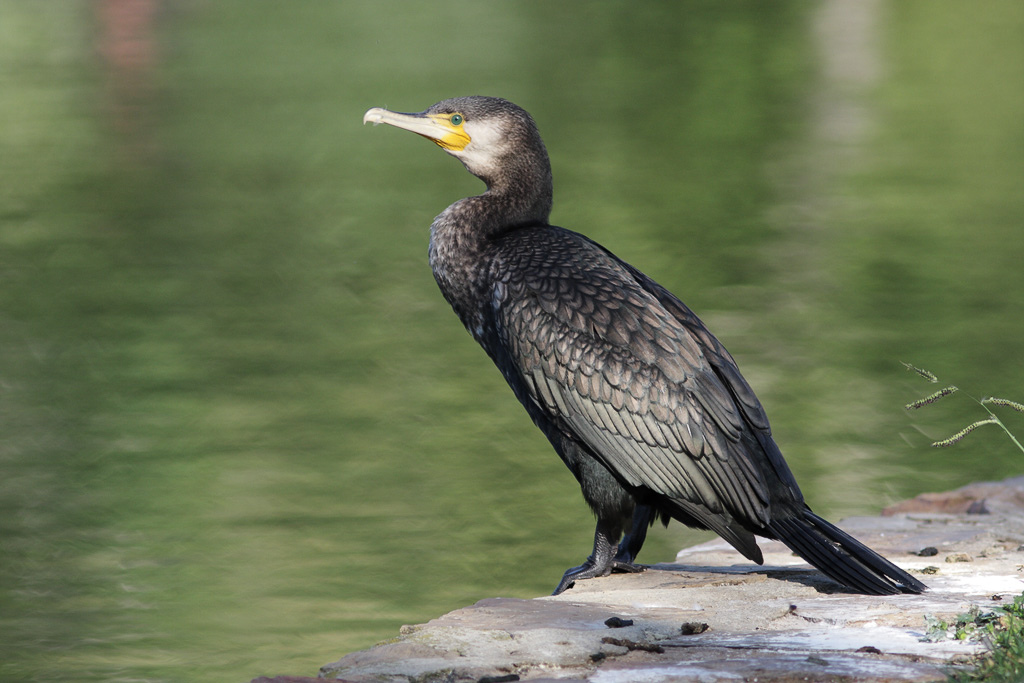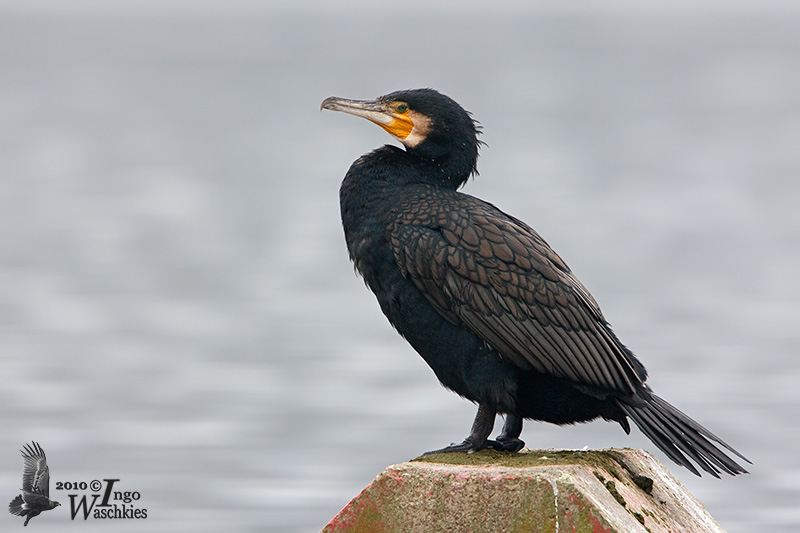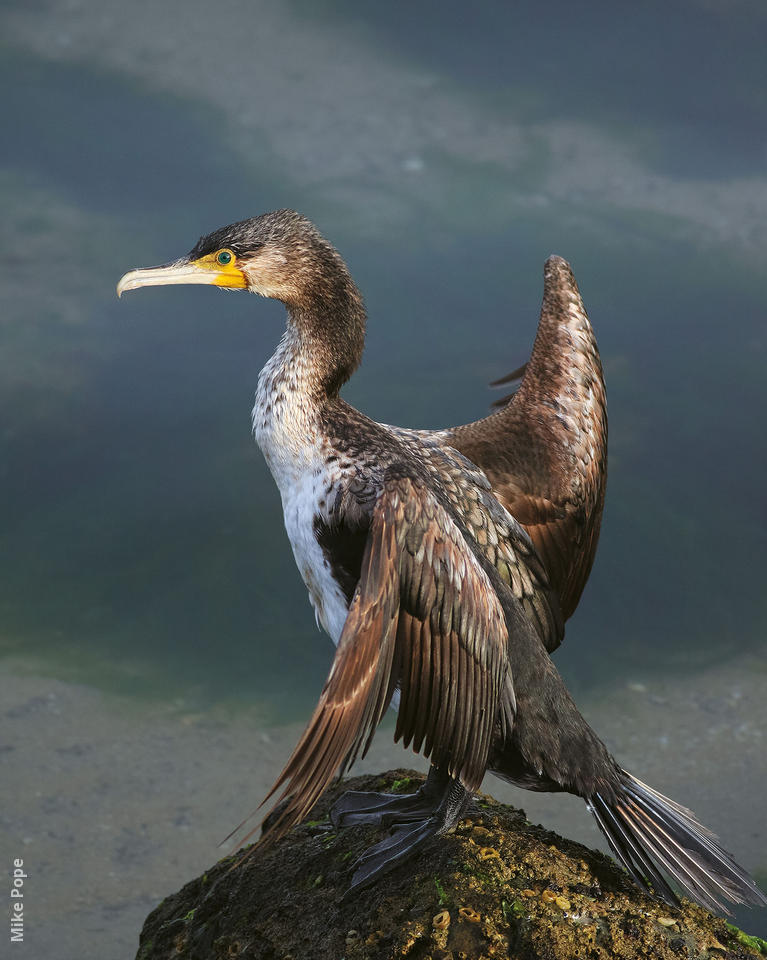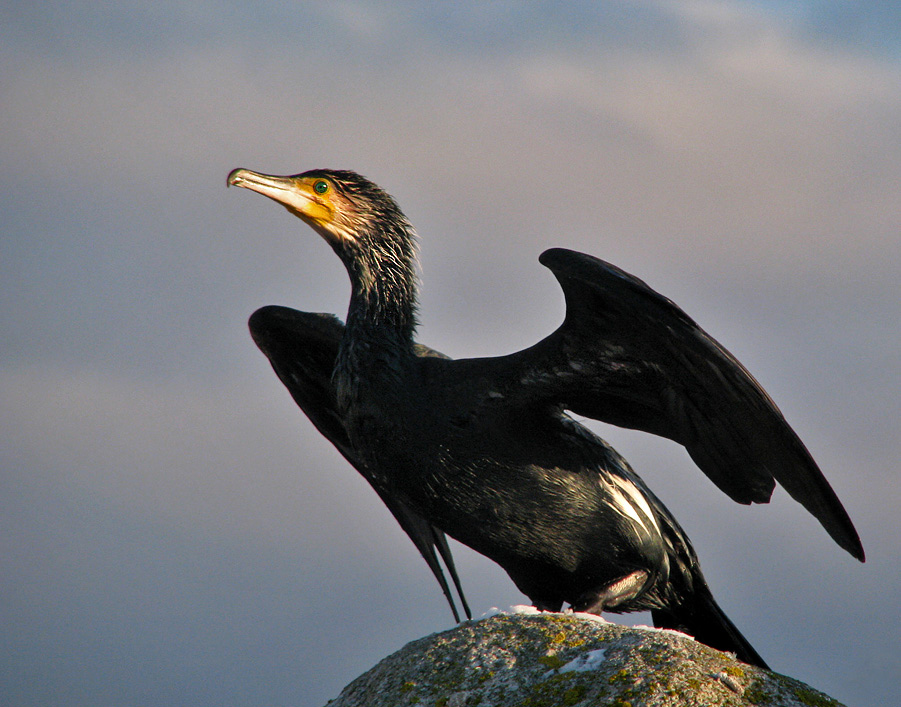
Phalacrocorax carbo
TAXONOMY
Pelecanus carbo Linnaeus, 1758, Europe. Six subspecies.
OTHER COMMON NAMES
English: Black cormorant, white-breasted cormorant; French:
Grand Cormoran; German: Kormoran; Spanish: Cormorбn
Grande.
PHYSICAL CHARACTERISTICS
This largest species of cormorant has a body length of about
37 in (93 cm), with a pale yellow bill, pale yellow cheek pouch
bordered by a white throat, glossy blackish plumage, black legs
and feet, and males somewhat larger than females (males: 5.1
lb (2.3 kg); females: 4.2 lb (1.9 kg).
DISTRIBUTION
A very widespread species in temperate regions of the world,
occurring locally in the Northwest Atlantic of North America,
more widely through Eurasia, and in parts of Southeast Asia,
Africa, and Australia. They generally winter near their breeding
grounds.
HABITAT
Nests on seacliffs, feeds in coastal waters.
BEHAVIOR
A highly social species that breeds in colonies and aggregates in
flocks. Like all cormorants, it catches fish by underwater pursuit.
FEEDING ECOLOGY AND DIET
Feeds on small fish, crustaceans, and squid.
REPRODUCTIVE BIOLOGY
Lays three to four eggs in a crude stick-nest on a cliff ledge,
with both sexes sharing the incubation (27–31 days) and rearing
of the chicks.
CONSERVATION STATUS
Not threatened. Rather abundant over much of its range.
SIGNIFICANCE TO HUMANS
Not of great importance to humans over most of the range;
however, in Japan this is one of two species (the other is the
Japanese cormorant, Phalacrocorax capillatus) trained by human
fishers to help them catch fish.
Photo Gallery of - Great cormorant




 Animalia Life
Animalia Life